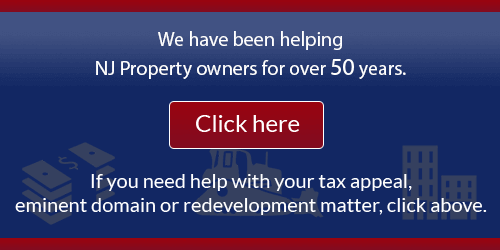Great 8, Numbers 6 & 7: Cat in the Hat & Suydam
Two for one Friday, or the Daily-Double!
There was a raging debate twenty years ago (tempus fugit!) about what happens when government acquires allegedly contaminated property for public use. Parties clashed over whether property seized by eminent domain should be valued considering the impact of the alleged contamination upon the value, or whether the contamination issues should be segregated and saved for a later proceeding. The debate was largely settled on July 10, 2003 when our Supreme Court decided the companion cases of New Jersey Transit v. Cat In The Hat, LLC and New Brunswick v. Suydam Investors, LLC. Justice Virginia Long penned both, and our very own Edward McKirdy was counsel to the property owner in Cat in the Hat. Both are worthy of a full read, but here are the holdings:
Suydam: “We hold that contaminated property that is the subject of condemnation is to be valued as if it has been remediated and that the condemnor may seek an order requiring a portion of the award to be set aside to satisfy the condemnee’s clean-up and transfer obligations.” (a.k.a., the “Trust-Escrow Approach”).
Cat in the Hat: “In light of decision today [in Suydam] holding that contamination should not be considered as a valuation issue in a condemnation case, but should be reserved for a separate cost-recovery action, it follows that the reservation of rights clause is legitimate and that res judicata, collateral estoppel and entire controversy defenses are unavailable in the later cost-recovery action.”
So for the last twenty years, every condemnation complaint in New Jersey has included a recital about whether there was any allegation of contamination affecting the property, and a reservation of rights in the event environmental contamination is discovered post-complaint. In addition, knowing that a property taken by eminent domain is valued “as if remediated”, while there has been some back and forth between government agencies and property owners as to the possible distinctions between a property that is “remediated” and one which is “clean”, mainly focusing on whether a remediated property has any stigma which might affect its value, these issues pale in comparison to the struggle that used to exist in valuing contaminated properties in condemnation matters prior to the law change in 2003.
I have only had to try the issue of the amount of the Environmental Trust Escrow once in the last twenty years, so it appears that Justice Long’s following words on the point were prescient:
“The Appellate Division’s concern over a condemnor asserting “frivolous or exaggerated” environmental costs to tie up the condemnee’s award and to “gain unfair leverage” requires comment. Under the trust-escrow approach, when the condemnee makes a motion pursuant to R. 4:73-9(c) to withdraw the money paid into court the condemnee, in many instances, will agree with the proffered amount of the transactional costs, thus forestalling any further controversy. When there is a dispute over the amount however, a trial-type hearing will be held under R. 4:73-9(b) at which the condemnor will bear the burden of supporting the estimate of the transactional costs. If that burden is sustained, the withholding will be allowed and if not, the full amount will be released. The existence of such a proceeding to challenge withdrawal and the burden cast on the condemnor underscores the need for the condemnor to have performed at least a preliminary environmental assessment and to have evidence in hand on the contamination issue. That procedure should obviate the concern of the Appellate Division over frivolous or exaggerated cleanup costs.”
Some ancillary issues have arisen over the last twenty years of NJ condemnation practice, but these two cases form the foundational law on topic.
That’s all for this Friday.








